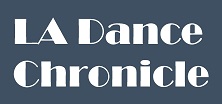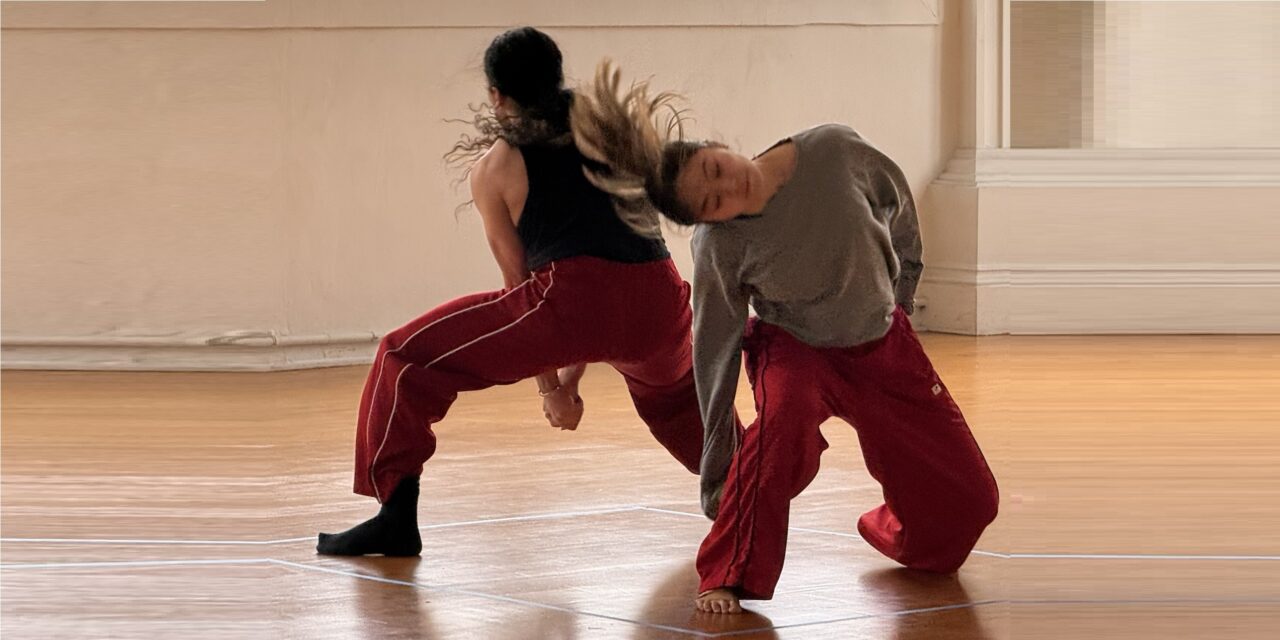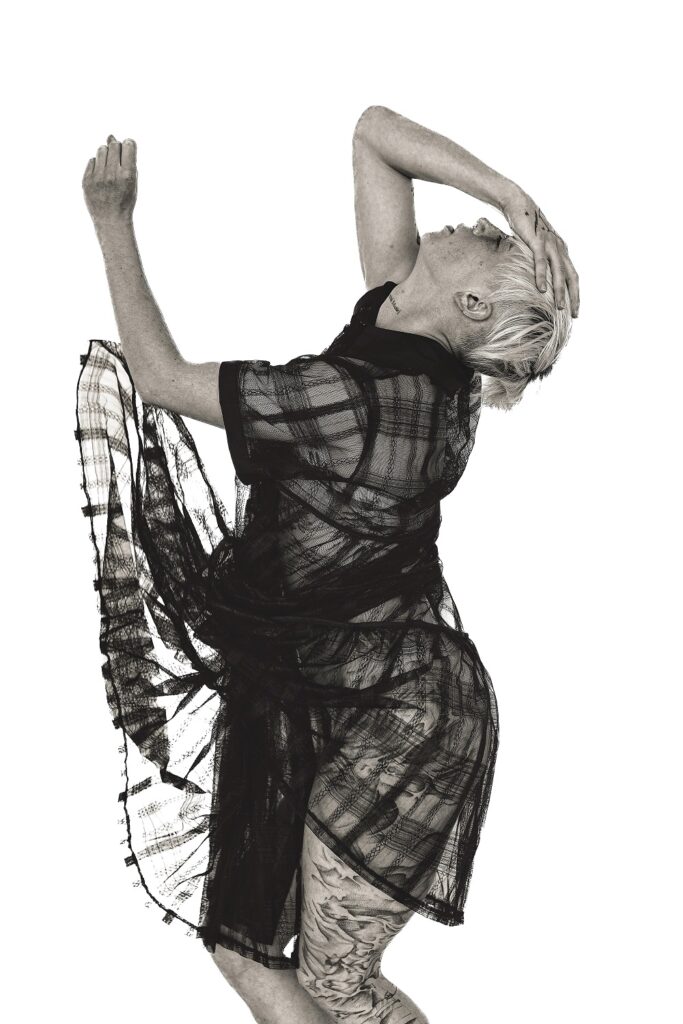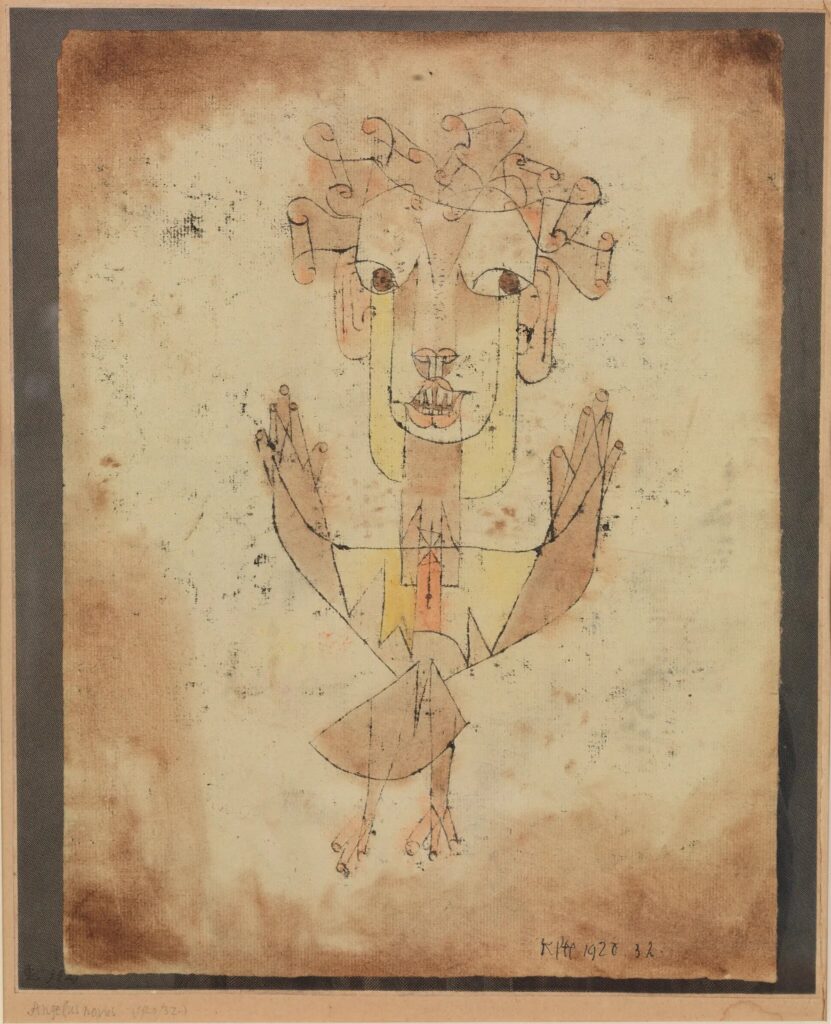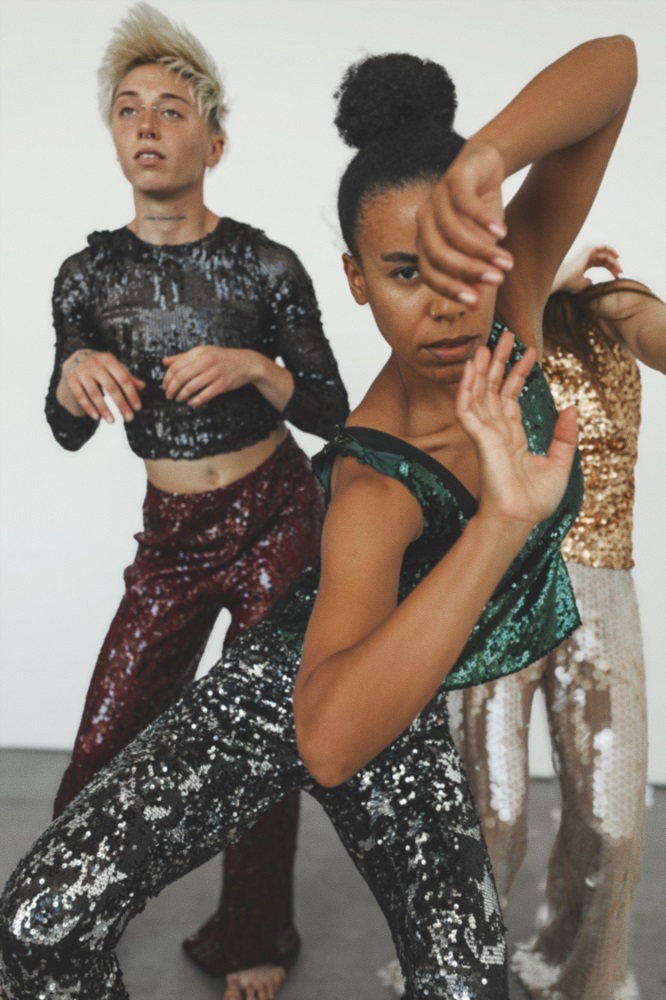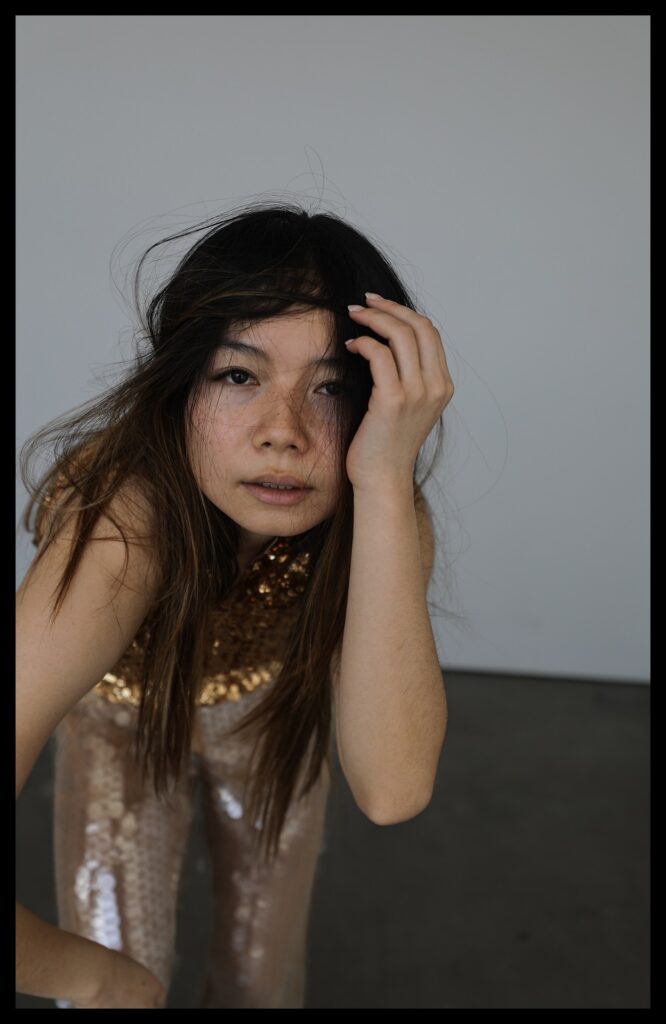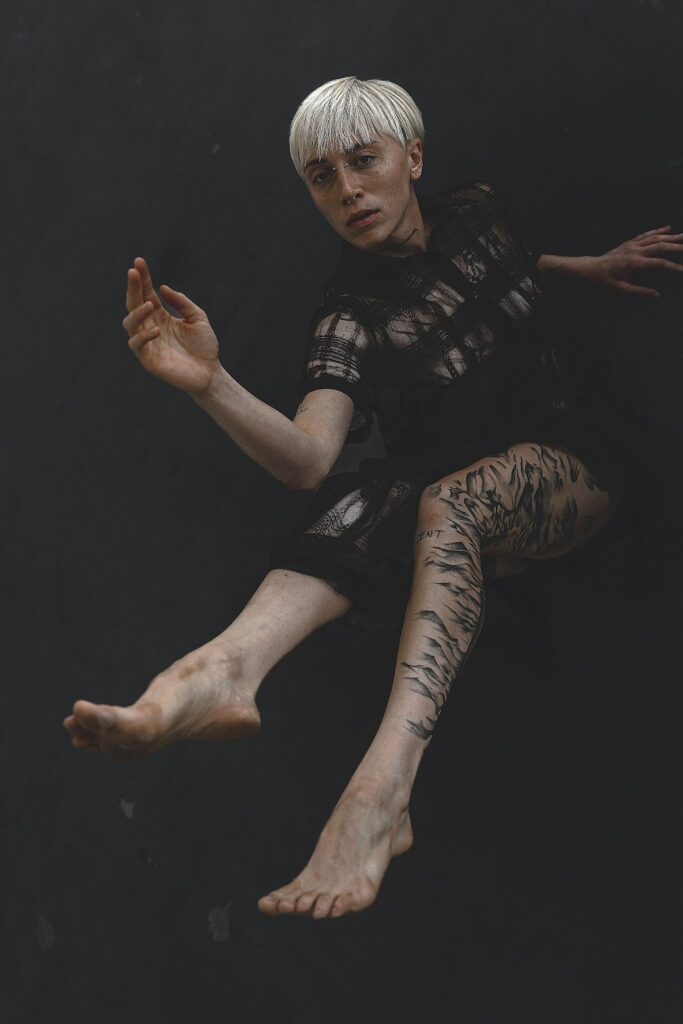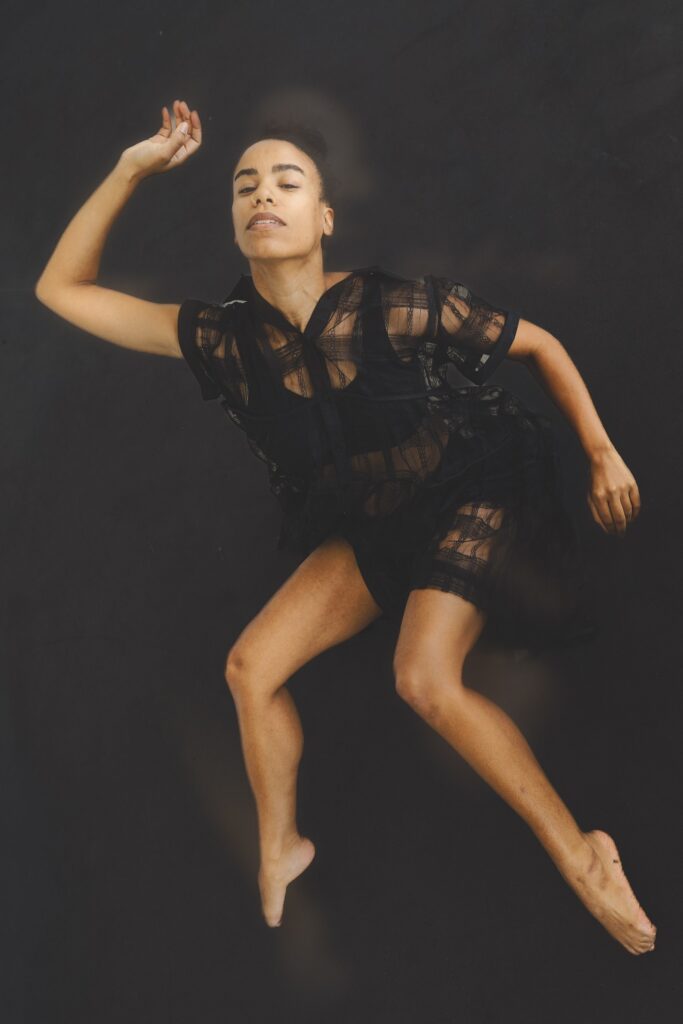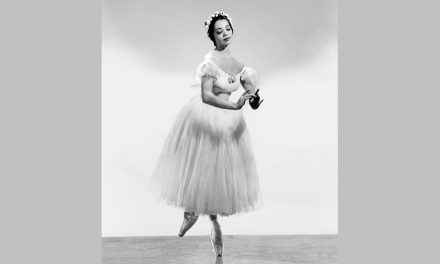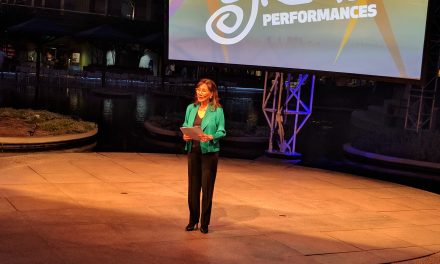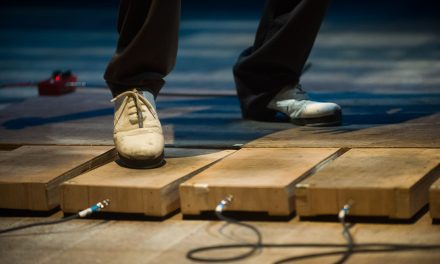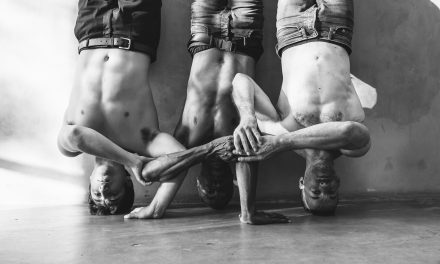It started with an e-mail announcing a new duet by choreographer Rosanna Gamson with a preview before its performance at a gala in Taiwan. Previewing downtown at Pieter Performance Space on Sunday, Oct. 5, the duet boasts two excellent dancers, Gretchen Ackerman and Marissa Brown. An invariably insightful choreographer. In between rehearsals, Gamson talked about the duet, the preview, and the Taiwan performance. The conversation led to a related larger work, and a new endeavor aimed at supportively critical previews.
When she and the dancers of Rosanna Gamson/World Wide move onto a stage, audiences tend to leave wowed by the dancing and chewing on their reactions to Gamson’s deeply observed ponderings. The caliber of her abilities is reflected in her status in the LA dance ecosystem and her role as dean of dance at prestigious CalArts.
After years of covering Rosanna Gamson, it was not a surprise that a simple starter question launched a response with references to a German philosopher who inspired Tony Kushner’s Angels in America and how an alum of CalArts’ dance department fueled the new work for the Taiwan gala. Like a leisurely ocean view drive along PCH, Gamson took the conversation on a scenic route with answers that proved more interesting than the direct path. (The interview has been edited for clarity and length.)
Haskins: Please tell me about Blue, the duet you are previewing before the Taiwan performance?
Gamson: It’s part of a larger piece with a working title of Our Fragile Eternity. It is something I’ve been wanting to make for about five years. I am on sabbatical this semester. I actually have time to make things, and that’s so beautiful. There’s a really famous piece of writing by Walter Benjamin, a German philosopher in the 1940s, a great thinker. He was in the milieu of the whole Weimar moment in Berlin and he was influenced by Kabbalah. He wrote an essay called On the Concept of History. As part of it, there’s this one quote about the “angel of history.”
A lot of works have been influenced by this one little paragraph. Wim Wenders’ film Wings of Desire is one. Tony Kushner’s Angels in America is another. Laurie Anderson’s album “Strange Angels” is another. So it has had a huge impact culturally.
Walter Benjamin had this painting by Paul Klee that carried around with him called “Angelus Novus”. Klee shows an angel looking as though he is about to move away from something he is fixedly contemplating. His eyes are staring. His mouth is open. His wings are spread. This is how one pictures the angel of history. The storm irresistibly propels him into the future, to which his back is turned while the pile of debris before him grows skyward…. This storm is what we call progress.
So it’s about the tragedy of progress, the tragedy of constantly looking backwards and trying to solve things, but we can move forward. That’s the big picture of my piece, but it is also about ghosts and angels and the fascination with the desire to communicate with the dead, the desire to communicate with the past, to take lessons from the kind of disorder of the past.
There was real interest in the late 1800s about communicating with the dead. It was right after the Civil War, and there were three spiritual movements. One was the American spiritualist movement, which included the Fox sisters, who later admitted they were frauds, that it was all foolishness. Yet it grew into this huge movement in America, and then in England.
At the same time, there was the Ghost Dance, a ritual of tribes in America. It took root and moved into a lot of different tribal structures. It is believed that if they did this dance and if they lived good lives that white people would become extinct. This was at the same time that this American spiritualism thing was happening, and it scared the United States government, a lot, and gave a rationale for massacres of Indigenous people.
Then we have the third movement. Walter Benjamin was really interested in Kabbalah, Jewish mysticism.
It’s all in the gestational framework right now. The new piece is trying to use the analogy of those three spiritual movements. I am hoping that this duet is going to thread throughout this bigger piece. I am excited to start to workshop it, although it only has a working title right now, Our Fragile Eternity. It is about how an invented, fictional history is being perpetrated on us right now, about making America great again, things that have never been, and at the same time a denial of the future because we are burning up the planet.
And I would like to use 19th century seance tricks, all those smoke and mirrors tricks, but using contemporary technology like projections. Maybe there will be people who only exist as ghosts and who are only projections, which allows playing with scale from tiny to enormous. So that’s the bigger piece.
The duet Blue is what we’re taking to the gala, which is kind of a funny story. I developed a relationship with Dominique Yen, an alum from CalArts, who was sort of living this parallel life to me in Taiwan.
Dominique first approached me to say, “I’m going to be in California. I’d love to come by CalArts, maybe teach a class, and visit.” She was bringing a couple of dancers and asked if we could do a showing of some of her work. She did some super interesting work with wonderful performances from the students she brought with her. While she was here, she said, “Maybe you’ll come to Taiwan?” She’s in Tainan, which is the southern city, the old capital of Taiwan before it moved up to Taipei. Tainan is very famous for food. It’s the gastronomical capital of Taiwan, like Lyon is in France. I went there for 10 days. I worked with the students, and we put up a show in 10 days. It went really well. We ate really well.
About six months ago, Dominique told me she was putting on a dance gala and invited me to bring some work. I said, sure, thinking it was going to be a festival so we would be going to dance for maybe 10 minutes; we were going to eat really amazing dumplings; and it would be fun. Then I found out it’s an international festival. Still, I figured maybe ten minutes to do a party piece. Then I found out there were only four on the program, the UK, the US, Hong Kong, and Taiwan.
Turns out the guy from the UK is not from the UK, he’s Ugandan. He was a child soldier and he’s doing a huge piece about being a child soldier. And he’s really good. Then I saw that Dominique is doing a work she brought to the states. It’s this humongous piece with maybe 25 young women.
So you’ve got child soldiers and terrible, terrible videos of terrible things and women conquering history and moving into the future, very stirring, not a dry eye in the house. And then there’s the guy from Hong Kong. I don’t know exactly what he’s doing, I’ve only seen photos. He’s extremely fit, wears very few clothes, and there’s some sort of large pole involved. So acrobatic? Amazing physicality, right?
Six months ago, they needed a title right then. I said “Blue,” thinking maybe I could use the Joni Mitchell song, because I was still in the mindset of doing a party piece. After seeing the other three and the theme of human rights, a party piece wasn’t going to wash. When they said the actual specified assignment was a 15 to 20 minute duet, I decided that alongside the other works, if mine was not hopeful, it would be upbeat.
When I started working with Gretchen Ackerman and Marissa Brown, I thoroughly read the United Nations’ Universal Proclamation of Human Rights. Number six states that everybody needs to be recognized as a human being. That covers it, and became this duet about friendship and loyalty, about the people who you won’t abandon, and that you will stick with them. You can’t be scared off. You will stay with them.
Haskins: Am I understanding that you want to use this duet to thread through this larger piece that you’ve got in mind?
Gamson: Yes. Just accidentally, I found this amazing clip of sound. It is this woman coming home, and she has dogs, Malamutes or Huskies, and they’re howling and barking, and she has this sort of very privileged little voice saying, “Hello Pretty! “Hello, Pretty! Hello. Hello…” It was just so weird. The idea of these women dancing and the dogs howling and the lady saying “Hello, Pretty! Hello! Can you say hello?” It just hit me. And that’s just the opening image with this very, very saturated blue light, a four by four area of intense blue light. That area of blue light is like the privacy of a relationship, the safe place. If one of them is freaking out, can’t stop dancing, the other one is physically trying to calm them down, embrace them, and just chill them out.
Then the rest of the time, they just dance. When this blue light comes on, there’s another sort of intimate moment that is private and is not presentational. It’s not like dancing to show off your dancing.
I remember when my child had tantrums. It is very frightening, because when they are having a true tantrum, they can’t stop. Their brain goes into a place where they can’t stop and they have to run out of energy. And I remember just holding on and being like “Okay, I’m gonna be here with you.” So I’m trying to come up with a theatrical version of that. That’s one of the incidents.
Also where they’re trying to reach something that they can’t reach on their own. They have to lift. They have to support each other. So it’s like trying to find these metaphors. How do you show a relationship in 60 seconds, 90 seconds? How to distill it down to something that is kind of beautiful but upsetting? That is Blue.
Haskins: Is that what the October showing is going to be?
Gamson: The duet is pretty finished at this point. It’s done, and we have another month together for moments to be heartbreaking and beautiful, and then the rest of the time they dance. It is presentational, but it’s private in their blue space, their private space. The intimacy is blue. I think I picked blue because it has four million meanings. It means the sky, the sea. It can mean pornography. It can mean Puritanism. It can mean sadness. It can mean a whole bunch of different things.
Haskins: Will the duet and some of the larger work be part of the preview?
Gamson: I am lucky to have six amazing dancers, Alejandro Perez, Chloe Rauch, Marlie Couto, Jobel Medina, Tzong-Han Wu, and Joey Navarrete-Medina. I have super dance crushes on all of them and they were all, “Yeah, I’ll do it.” I’ve worked with almost all of them before. Now I want to try a whole bunch of different prompts, just developing a library of stuff. Also, I’ve been reading the “Duino Elegies”, ten poems by Rainer Maria Rilke where he talks a lot about love, angels, and the desire to disappear. What stays? What goes away?
The October preview will be the whole duet, which is actually 16 minutes long, which we really need to get in front of people and I’m hoping to show some of the larger work as well. Hopefully, we will have an intelligent conversation about it, not just like, “Oh, where did you get this idea?” “Aren’t they pretty dancers?” I need to know where people fell asleep or lost track. I need to know if it’s communicating, because then we’ll have the rest of the month to think about it and work on it. So I’m showing the whole duet without lighting, and then I’m hoping to have some material developed from next week’s work that hints at the vibe.
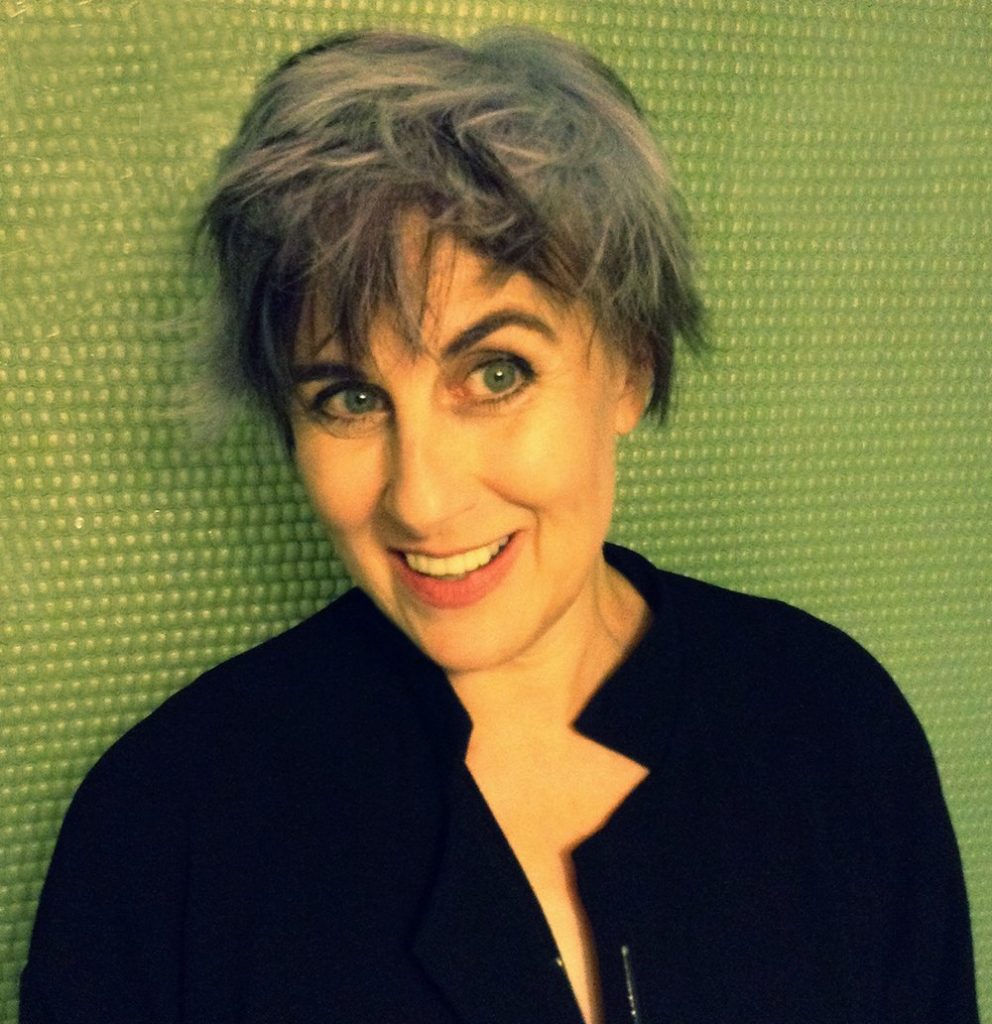
Rosanna Gamson – Dancer, choreographer, Artisitc Director of Rosanna Gamson/World Wide – Photo courtesy of the artist
Gamson’s ideas can percolate for months or even years before she walks into the studio. She thinks a lot about the ideas in her reading and how they relate to others’ thinking in other books. The resulting works often distill and collate multiple ideas into a work that takes an audience along a journey of movement, ideas, and thought provoking perspectives…a lot like her answers to interview questions.
Rosanna Gamson/World Wide – Blue (preview with discussion) at Pieter Performance Space, 2701 N. Broadway, Downtown; Sun., Oct. 5, 4 pm, free w/reservation, donations welcomed, at RGWW-Blue.
Written by Ann Haskins for LA Dance Chronicle.
Featured image: Rosanna Gamson/WorldWide – Photo courtesy of the artists.
